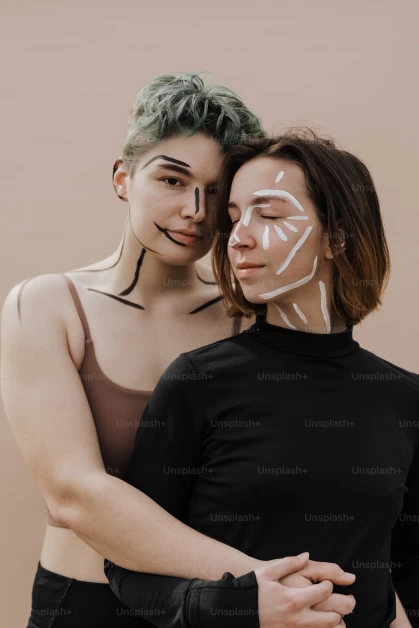Table of Contents
Graphic design software has come a long way, offering designers more options than ever before. In the past, designers had limited choices when it came to professional graphic design tools. However, now they can choose from a wide range of software options and tools that cater to their specific graphic design needs. To help you find the best solution for your needs, we have compiled a list of the top graphic design apps and tools. We have compared the price, operating platforms, key features, pros and cons of each, and more. Here are 20 graphic design apps and tools to try:
1. Adobe Illustrator
Adobe Illustrator is a software that sets the standard for vector graphics. It is widely used for creating professionally designed logos, artwork, infographics, and icons. Illustrator is constantly developing new features for users, such as the Generative Recolor tool, which allows users to explore limitless color palettes and themes using the power of AI.
Pros:
– Integration with other Adobe editing tools
– Wide range of vector design tools
– Versatility in graphic design creations
– Supports multiple file formats
Cons:
– Resource-heavy
– Expensive subscription plans
– Steep learning curve
– Limited photo editing capabilities
Platform: Windows, Mac, iPad, Android
2. Affinity Designer
Affinity Designer is an excellent choice for personal projects or novice graphic designers. It has an intuitive user interface and a similar suite of design tools as Adobe Illustrator. Affinity Designer offers a 30-day free trial and a one-time purchase fee for continued use.
Pros:
– Affordably priced
– Lightweight
– Ease of setup
– Raster and vector workspaces in one program
Cons:
– Confusing onboarding and install documentation
– No cloud services
– Steep learning curve
Platform: Windows, Mac, iPad
3. Procreate
Procreate is a graphic design software that is exclusively made for iPad and Apple Pencil support. It offers features like 3D painting, state-of-the-art brush control, and the ability to work in 3D and preview it in real-time in AR. Procreate is perfect for users who want to try their hand at animation.
Pros:
– Extensive tutorial library
– Intuitive user interface
– Apple Pencil support
– Import Photoshop brushes
Cons:
– No free version
– Limited layering
Platform: iPad
4. Adobe Photoshop
Adobe Photoshop has long been the industry standard for desktop publishing. It offers a wide array of image editing tools and a user-friendly interface. Photoshop also integrates well with other Adobe programs.
Pros:
– Extensive library of stock images, templates, fonts, videos, and icons
– Excellent integration with other Adobe programs
– Support for multiple file formats
Cons:
– Expensive pricing plans
– Resource-demanding
– Slow load times
Platform: Windows, Mac, iOS, Android
5. Affinity Photo
Affinity Photo is a value-priced alternative to Adobe Photoshop or Adobe Illustrator. It works with layers and filters to create stunning effects with both vector and raster images.
Pros:
– Affordably priced
– Lightweight
– 30-day free trial
– Customizable brushes
Cons:
– No templates
– No keyword tagging feature
– Occasional software bugs/crashing
Platform: Windows, Mac, iPad
6. Canva
Canva is an all-around solution for creating a variety of projects, such as infographics, web design, or T-shirts. It uses an intuitive drag-and-drop interface that is easy to use for individuals with no previous experience in graphic design.
Pros:
– Easy to learn
– Free version available
– Wizard for on-the-fly creation
– Rich collection of resources and tutorials
Cons:
– Limited free features, requires in-app purchases
– Uneditable downloads
Platform: Web browser, Windows, Mac, Android, iOS
7. CorelDRAW
CorelDRAW offers precise design, advanced illustration capabilities, and easy-to-use collaboration tools. It offers both subscription-based and up-front pricing, making it suitable for a wide range of users.
Pros:
– Full Google Fonts library
– Template library
– Multi-language support
– Collaboration tools
Cons:
– High system requirements
– High cost
– Steep learning curve
Platform: Windows, MacOS
8. Adobe InDesign
Adobe InDesign is a standalone desktop publishing program that is best suited for image-heavy posters, presentations, and documents. It offers a range of tools for resizing, subject-aware text wrapping, and color location.
Pros:
– Excellent for image-heavy presentations
– Easy collaboration
– Layering functionality
Cons:
– Pricey
– Steep learning curve
– Large file sizes
Platform: Windows, Mac
9. Pixlr
Pixlr is an image editing web app that can be used in your browser or in mobile apps. It is a basic program that is perfect for essential editing tools without the complexity of more sophisticated offerings.
Pros:
– Affordably priced
– Version options for skill level and needs
– Batch editing
Cons:
– Limited number of templates
– No online cloud storage
Platform: Cloud, web-based, iPad, Android
10. Figma
Figma offers a lot of features for free graphic design software. It has an unlimited cloud storage that comes with the free version. Figma specializes in vector graphics and offers tools for on-canvas commenting, prototyping, and advanced animation capabilities.
Pros:
– Excellent features in pricing plans
– Private plugins at organization-level plan
– Great ease of use and customer support
Cons:
– No shared fonts at lower-price tiers
– No extra security features until organization level
Platform: Windows, Mac, Linux, Chrome OS
These are just a few examples of the many graphic design apps and tools available. The right choice for you will depend on your specific needs and budget. Consider trying out a few different options to find the one that works best for you.







